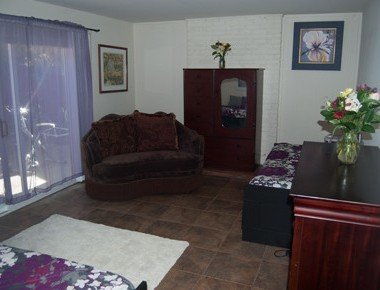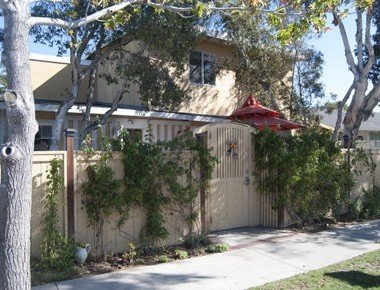Barbiturate Addiction
Sections: What Are Barbiturates? | Types | How They Take Hold | Signs & Symptoms | Effects | Withdrawal | Treatment | Hope
WHAT ARE BARBITURATES?
Barbiturates are a class of drugs known primarily for their role as nervous system depressants. These drugs function by reducing or slowing the activity of the nervous system, which is essential for controlling the body’s various muscular and organ functions. This action leads to the notable effects of barbiturates, such as significant muscle relaxation, a lowered heart rate, and slower breathing. Historically, barbiturates have been prescribed for conditions like seizures, insomnia, and chronic headaches. However, due to their potent effects and potential for misuse, their prevalence in medical treatment has substantially decreased in recent times.
TYPES OF BARBITURATE DRUGS
Barbiturates are available in different chemical formulations to treat a variety of symptoms and conditions. Examples of common barbiturate medications include the following:
- Amytal (amobarbital)
- Fortabs (butalbital, aspirin, and caffeine)
- Butisol (butabarbital)
- Seconal (secobarbital)
- Nembutal (pentobarbital)
- Esgic and Fioricet (butalbital, acetaminophen, and caffeine)
- Donnatal (belladonna and phenobarbital)
THE ADDICTIVE EFFECTS OF BARBITURATE ABUSE
We know for certain the answer to “Are barbiturates addictive?” is yes, but let’s take a closer look. Barbiturates, known for inducing a deep sense of relaxation, can yield feelings that are intensely pleasurable. This pleasurable effect, however, is a double-edged sword as it can lead to misuse and addiction. Addiction to barbiturates is not simply about seeking pleasure—it’s a medically recognized condition with a well-established physical basis, involving factors like genetic predisposition and significant changes in brain chemistry.
For example, consider a person with a seizure disorder who is prescribed a barbiturate. In a moment of distress, they might consume an extra dose, hoping for more effective relief. This act, although seemingly minor, can set a dangerous precedent, inadvertently paving the way toward dependency and addiction. The brain’s chemistry can start to adapt to this increased dosage, leading to tolerance and a need for more of the drug to achieve the same effects.
Another common scenario involves individuals who are already addicted to stimulant drugs, such as amphetamines or cocaine. They might turn to barbiturates to temper the intense highs brought on by these stimulants. This practice of using a sedative “downer” like a barbiturate to counteract the effects of a “’upper” can create a hazardous cycle of drug abuse. This cycle not only exacerbates the risk of addiction to either or both substances but also poses significant health risks due to the contrasting effects of these drugs on the body.
TELLTALE SIGNS AND SYMPTOMS OF BARBITURATE ADDICTION

Like any drug addiction, excessive use of barbiturates can have significant effects on a person’s health. Physical barbiturate symptoms can include the following:
- Excessive drowsiness
- Intoxicated feeling (similar to being drunk on alcohol)
- Difficulty walking
- Slurring of words
- Confusion
- Lowered inhibitions (doing things that they might otherwise find risky or embarrassing)
- Overall appearance of being “slower” or “sleepier”
- Coma or death (in the case of an overdose)
There are also a number of mental, emotional, and behavioral repercussions of an addiction to barbiturates:
- Isolation, withdrawal from even close friends and family
- Increased defensiveness, particularly when confronted concerning changes to their health, behavior, or medication use
- Sleeping more than usual (due to constantly depressed nervous system)
- Increased feelings of depression
- Lack of interest in former hobbies
HOW BARBITURATES AFFECT THE BRAIN AND BODY
According to the National Institute on Drug Abuse, barbiturate drugs are classed as sedative medications, as they chemically inhibit brain activity. The natural mechanism of this is a neurotransmitter known as gamma-aminobutyric acid—or GABA—which inhibits (or “shuts off”) certain brain activity when necessary.
Barbiturate drugs attach themselves to the receptors for GABA, triggering the “shut off” process and inhibiting brain activity, just as the neurotransmitter would normally do. This allows a person to imitate GABA function and sedate themselves on demand, as needed. Over time, a person can build a tolerance, leading to higher doses and increased risk of addiction.
THE DANGEROUS REALITY OF BARBITURATE WITHDRAWAL
When a person has been taking barbiturates for a long time, withdrawal symptoms can be incredibly severe. In fact, attempts to go “cold turkey” or detox without professional help can be life-threatening.
Common barbiturate withdrawal symptoms include the following:
- Nausea
- Vomiting
- Uncontrollable tremors
- High fever
- Seizures, convulsions
- Anxiety, irritability
- Hallucinations, delirium
GETTING PROFESSIONAL TREATMENT FOR AN ADDICTION TO BARBITURATES
When it comes to treating barbiturate addiction, it is of the utmost importance that the process is overseen by experienced medical professionals and addiction recovery specialists. While an addiction to something like nicotine is relatively safe to give up altogether, quitting barbiturates is not something that should ever be done at home. The symptoms of barbiturate withdrawal are intense and can very quickly become a medical emergency.
Professional inpatient or outpatient treatment at a barbiturate addiction rehab center is one of the safest, most comfortable, and most effective ways to get help. After admission to a program, patients go through barbiturate detox, during which they receive fully monitored medical care. In this controlled environment, the barbiturate drugs can be safely tapered off rather than suddenly withheld.

Once the cravings of the physical addiction are under control and withdrawal symptoms no longer pose a risk to the individual, he or she will be able to begin a variety of therapies and learn skills for maintaining sobriety and managing various life challenges outside of the program. The patient is supported by a team of compassionate rehab professionals throughout his or her program, and individuals often find strength in their relationships with others in recovery.
Usually, residential treatment programs will prohibit clients from having any contact with anyone off-site for some period of time at the beginning of the program. While this can be challenging for some, it is absolutely necessary to limit distractions and stressors from the outside world.
Professional rehabilitation programs also typically offer a variety of post-treatment resources designed to help individuals successfully transition out of rehab and back into regular life. Examples of such resources include job placement assistance, life skills classes, and recovery-friendly housing opportunities.
FIND NEW HOPE AT YELLOWSTONE RECOVERY
At Yellowstone Recovery in Southern California, we provide safe, understanding care to anyone seeking barbiturate addiction treatment.
Our full range of rehabilitation programs includes the following:
- Residential treatment – primary care
- Residential treatment – extended care
- Outpatient treatment (aftercare for former residential clients)
- Intensive outpatient (IOP) treatment (for those who do not need barbiturate detox)
- Sober living
Our residential treatment program starts with an intensive 30-day primary care experience that allows clients to focus on themselves without distraction. Through a combination of 12-step meetings and counseling sessions on-site, residents work through personal issues and learn valuable coping strategies and life skills. This is followed by a 60-day extended care program, which focuses primarily on finding a job and becoming self-sufficient.
If you’re addicted to barbiturates and you’re ready to get back to doing what you love in life, let the experts at Yellowstone Recovery help you get there. Call us today at (888) 941-9048 to get started.
- Treatment Options
- Program Curriculum
- Program Services








